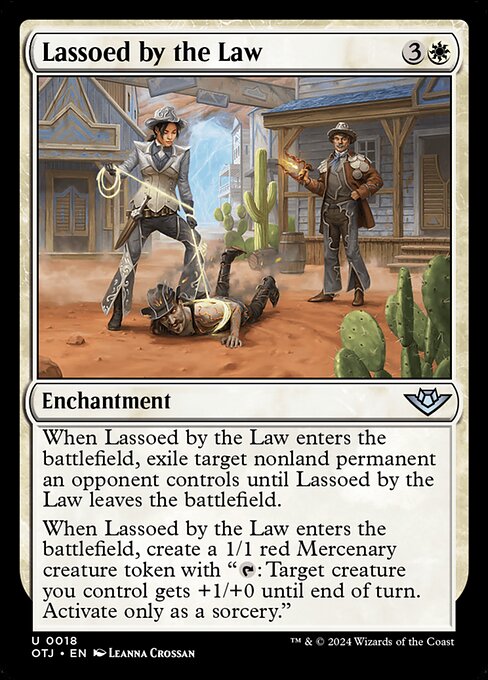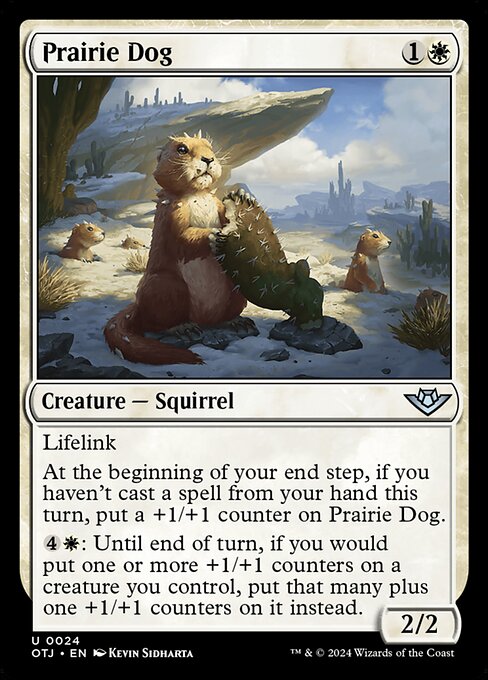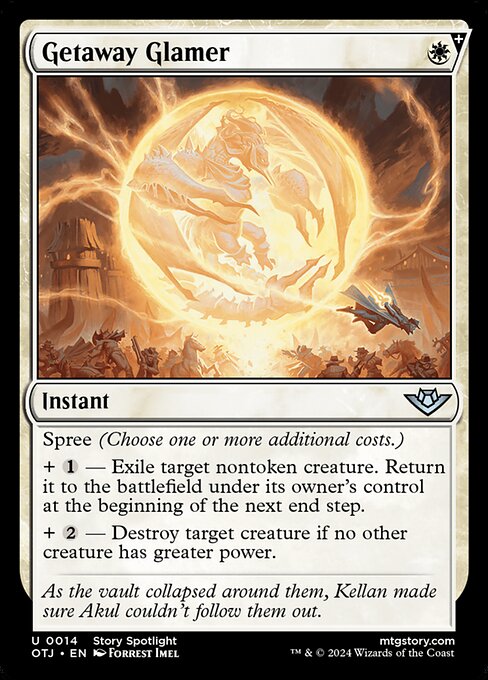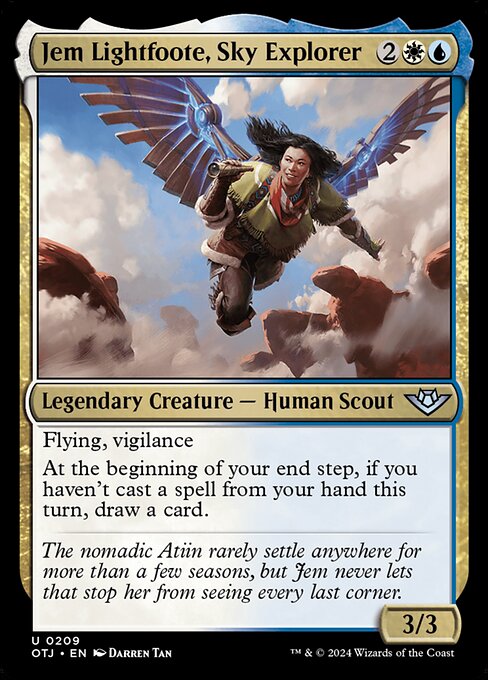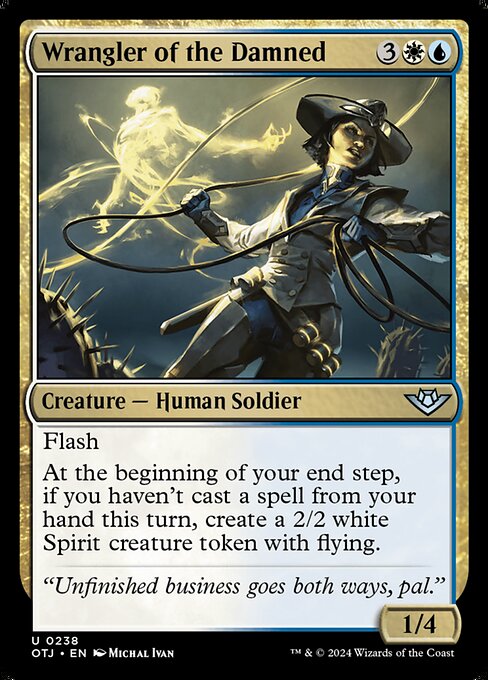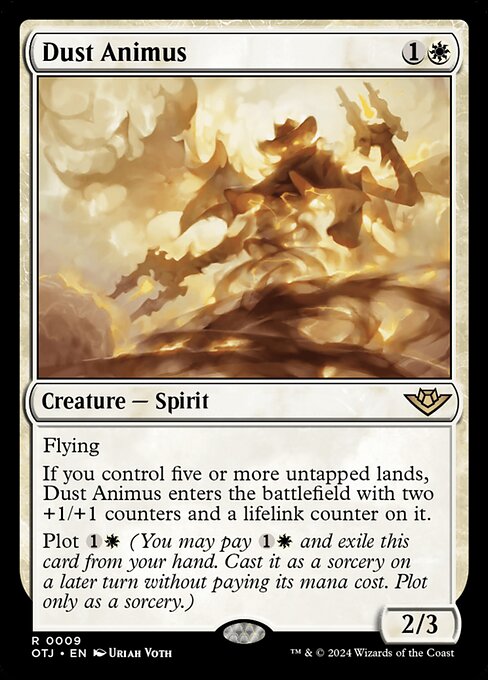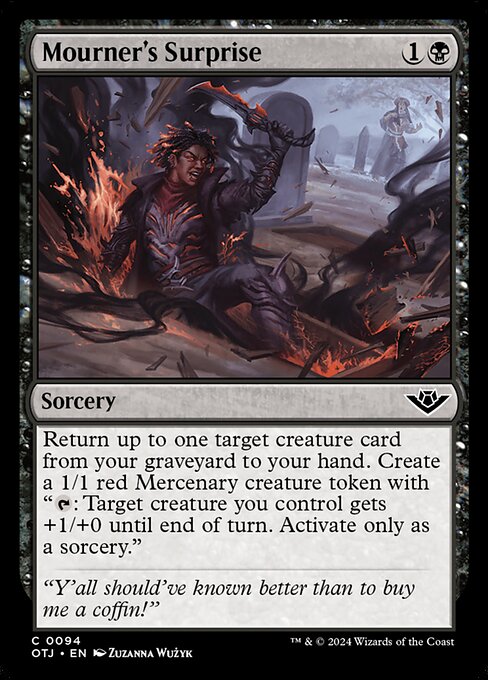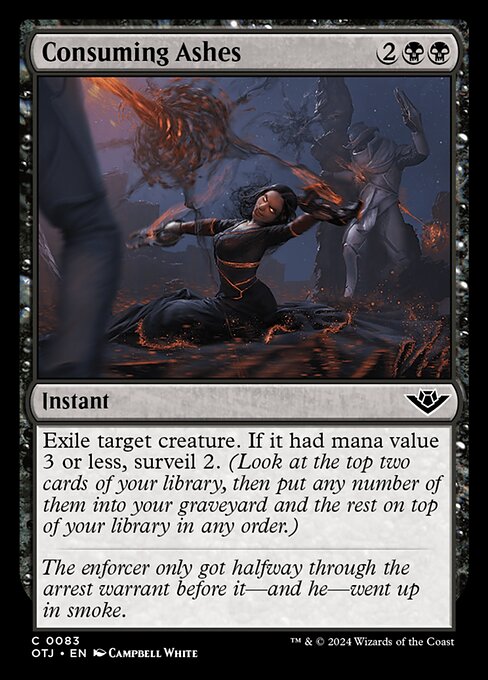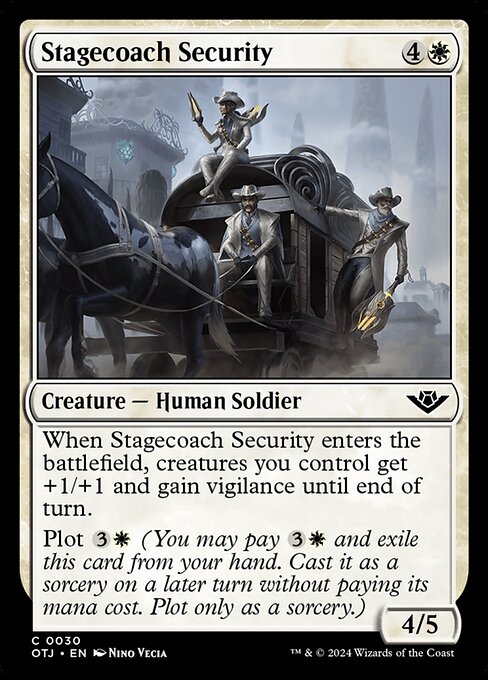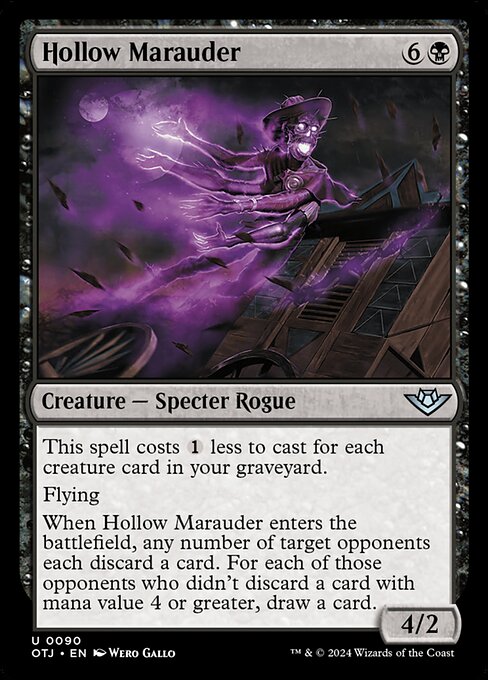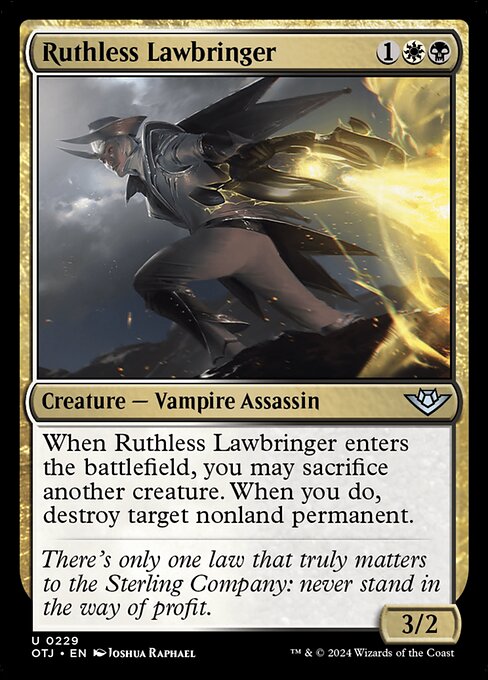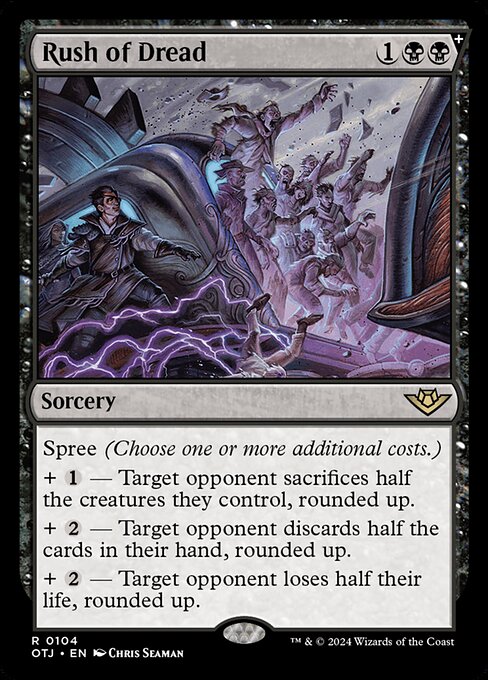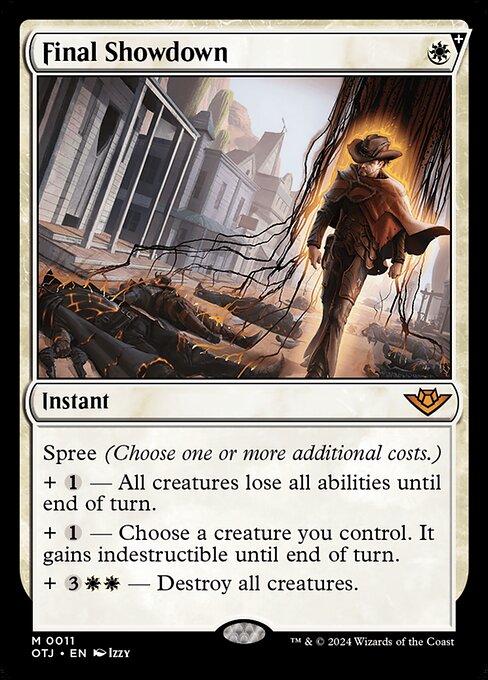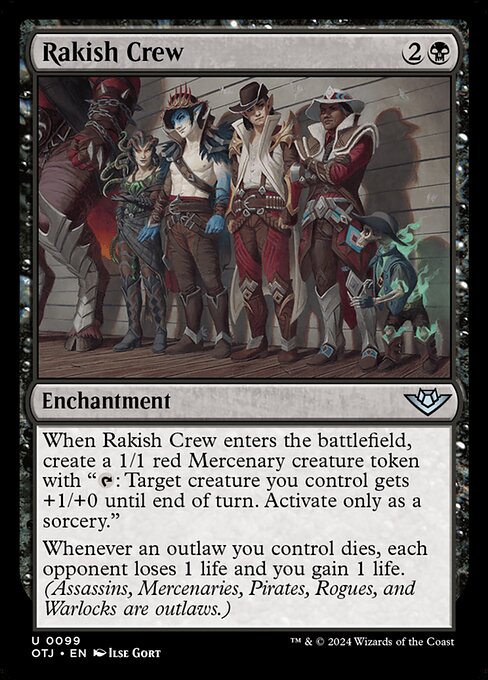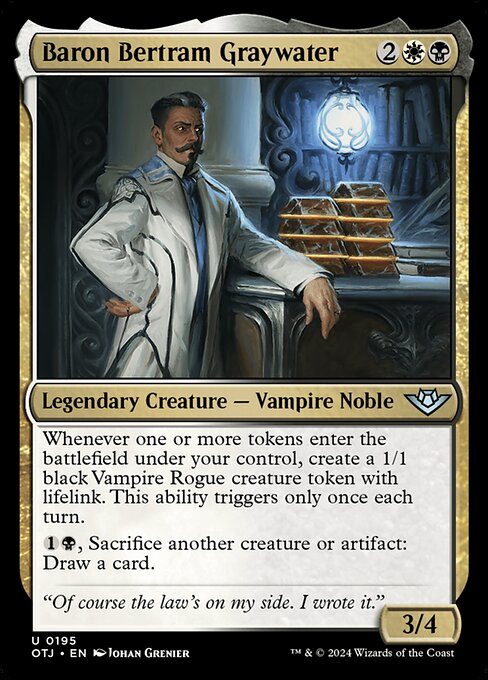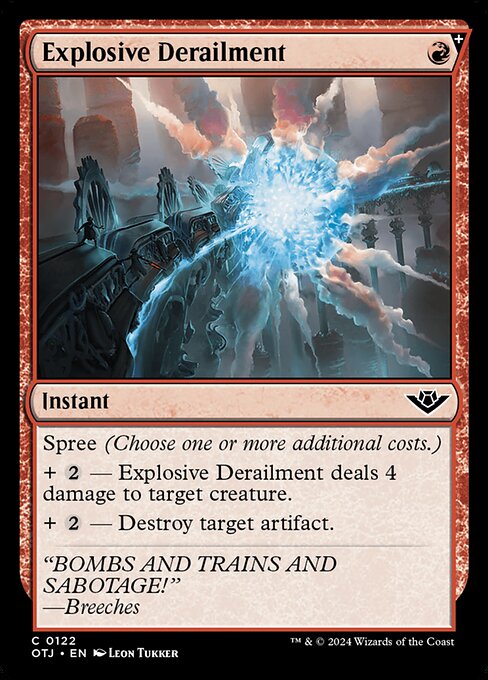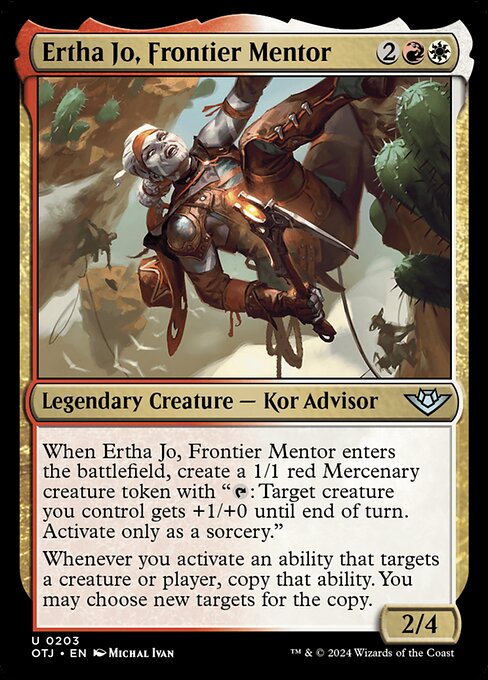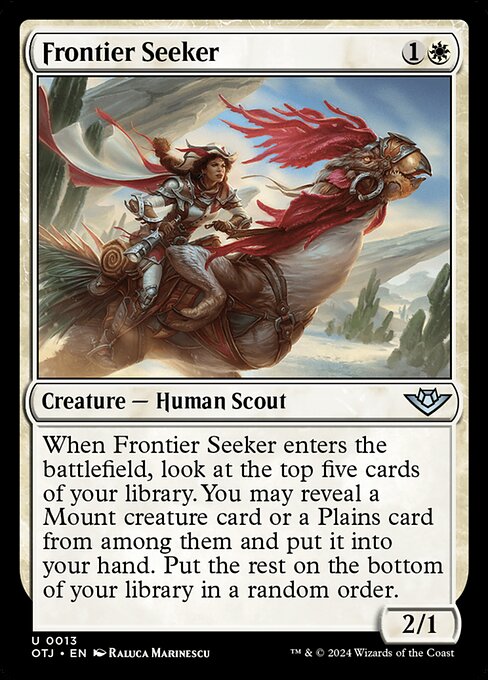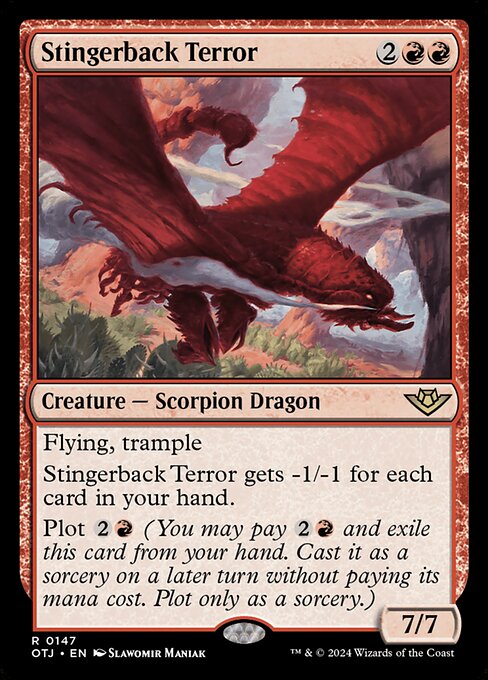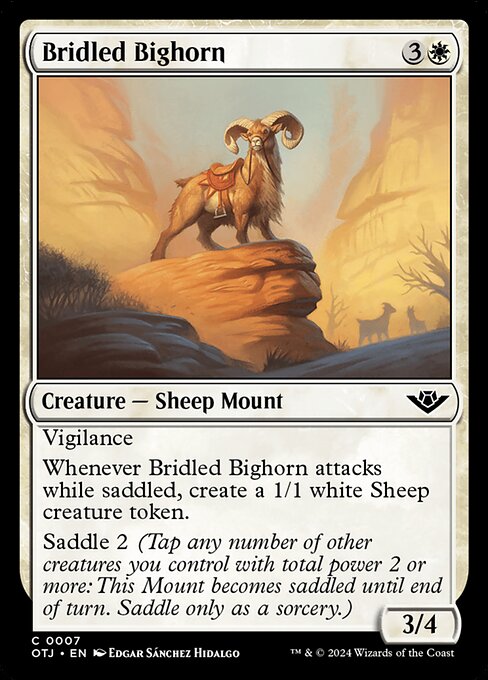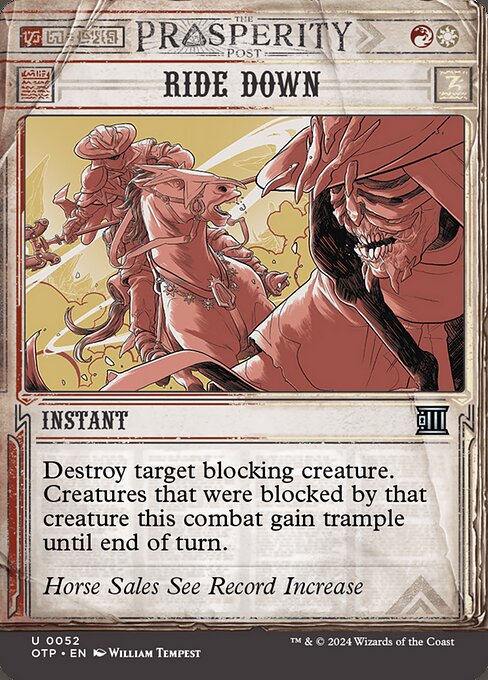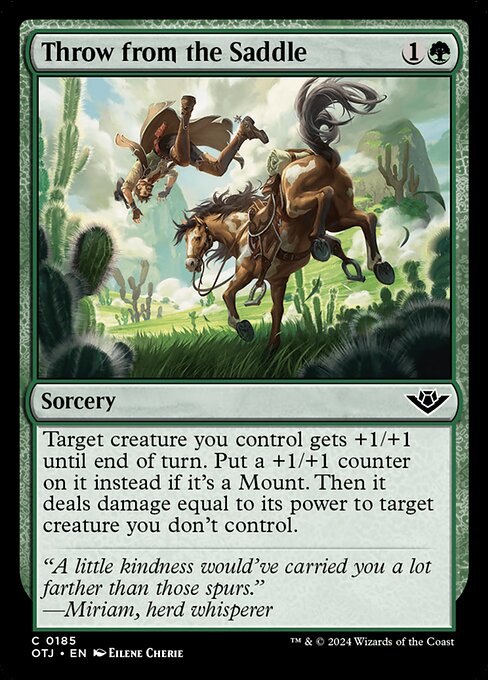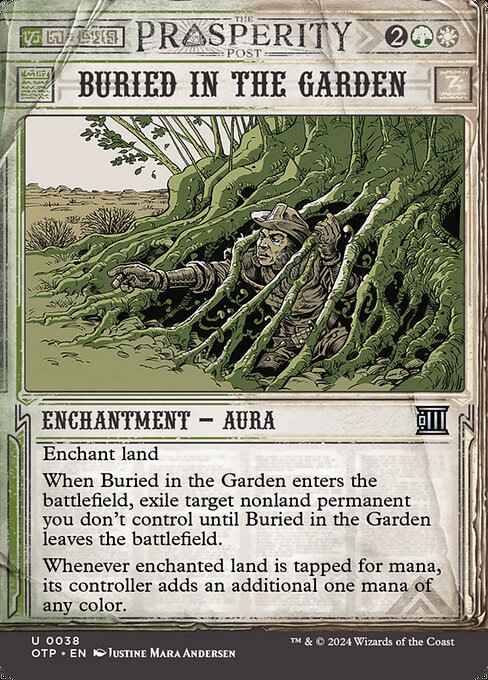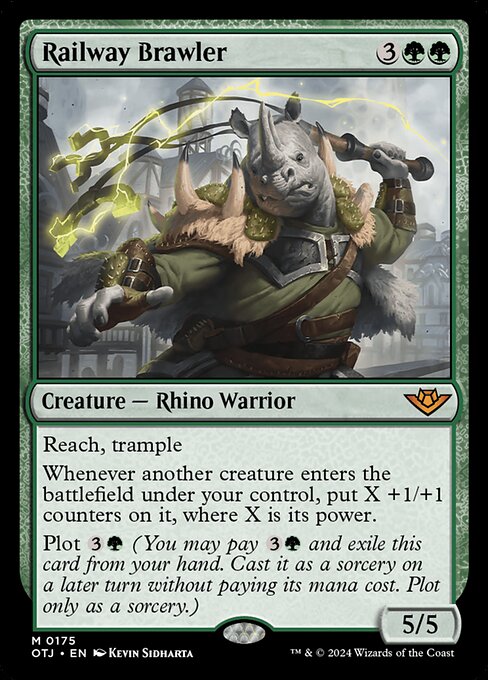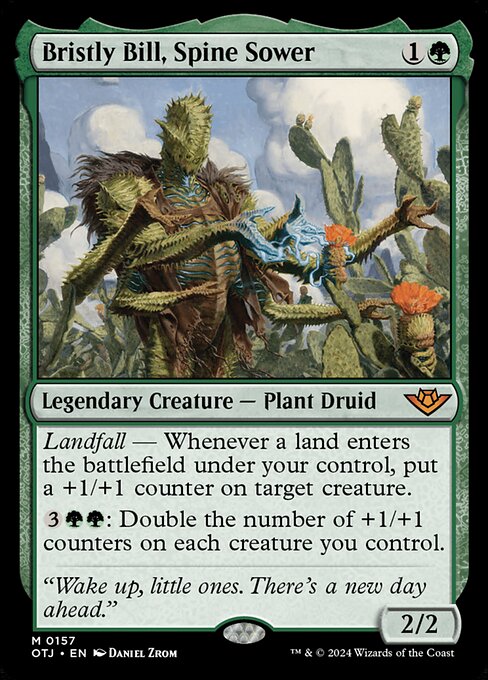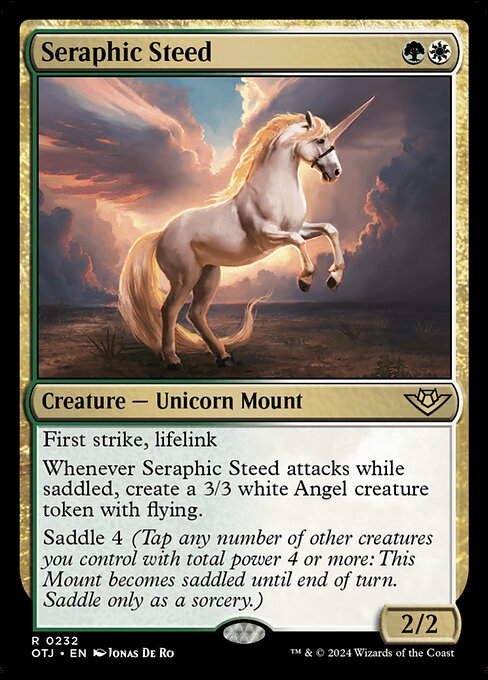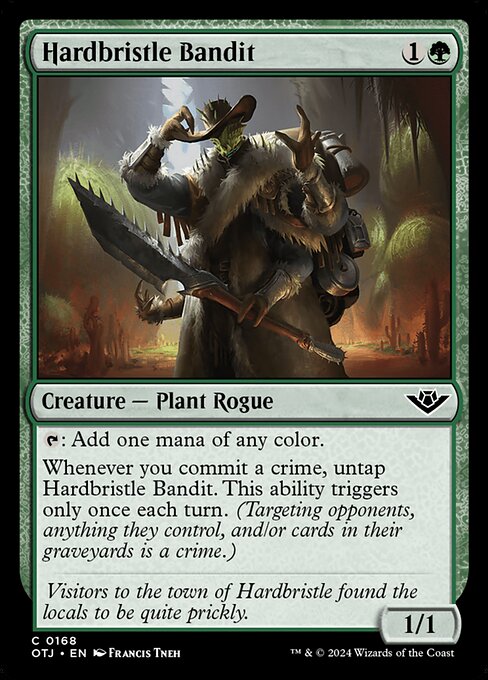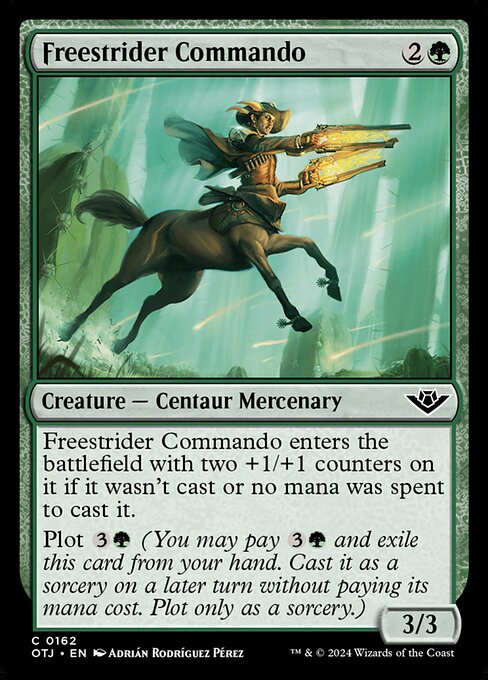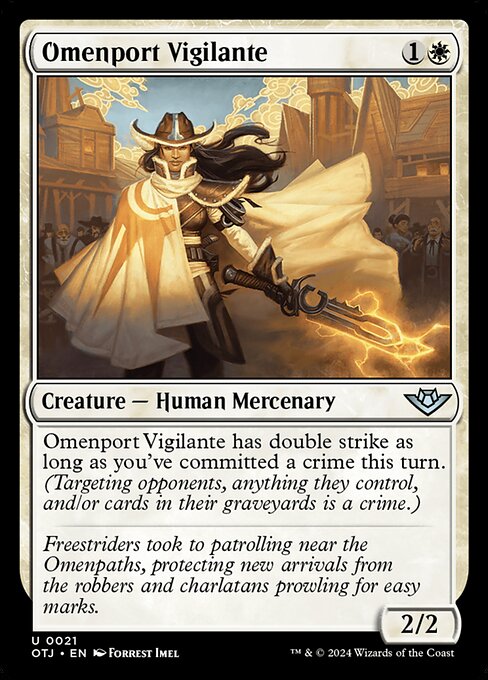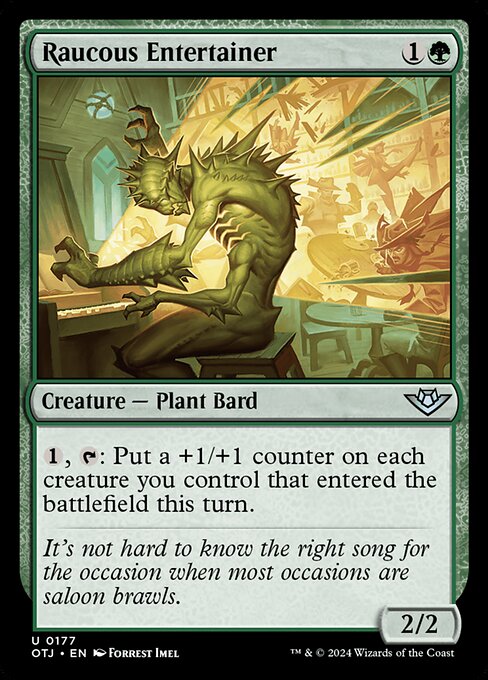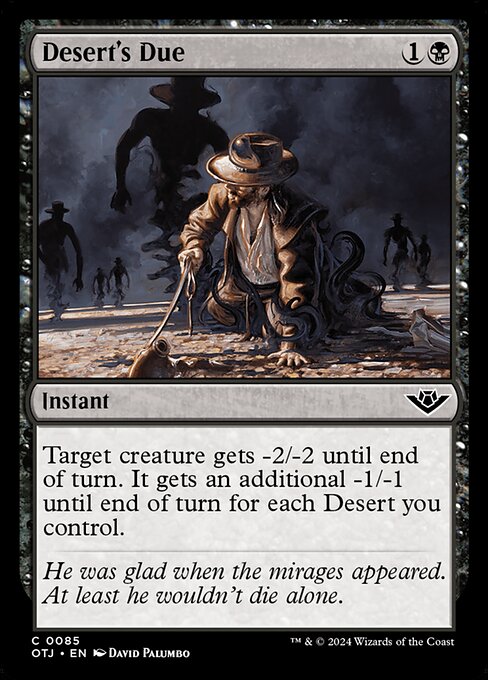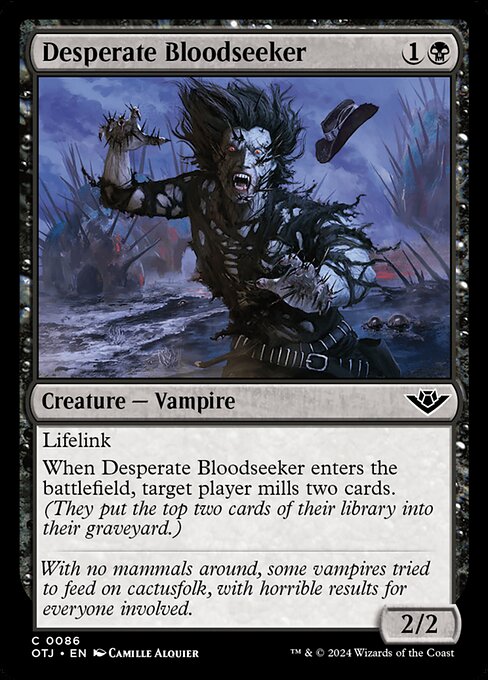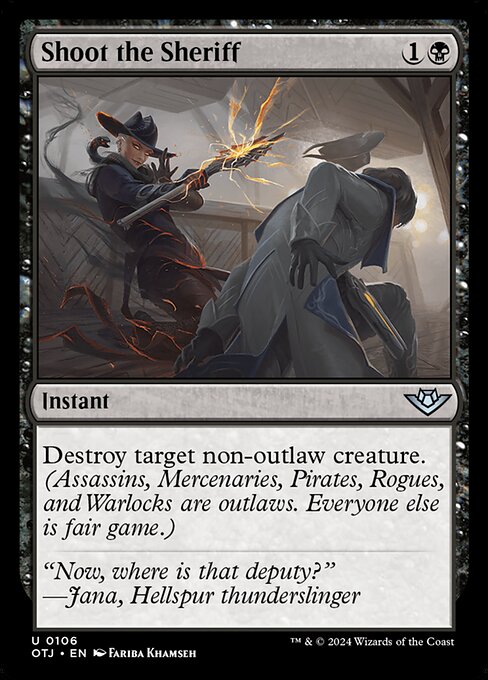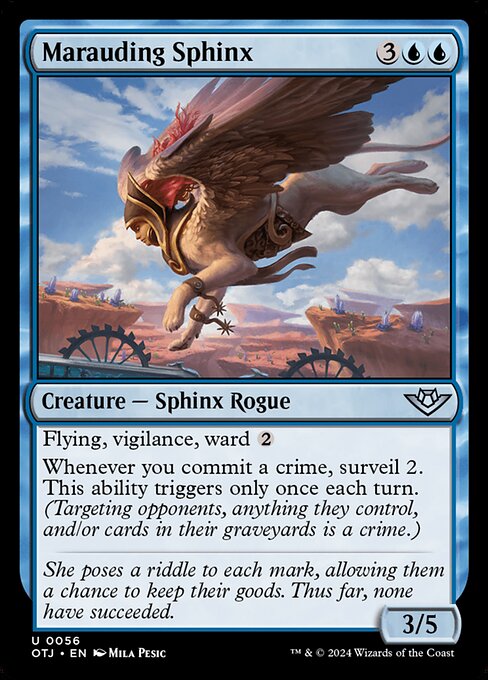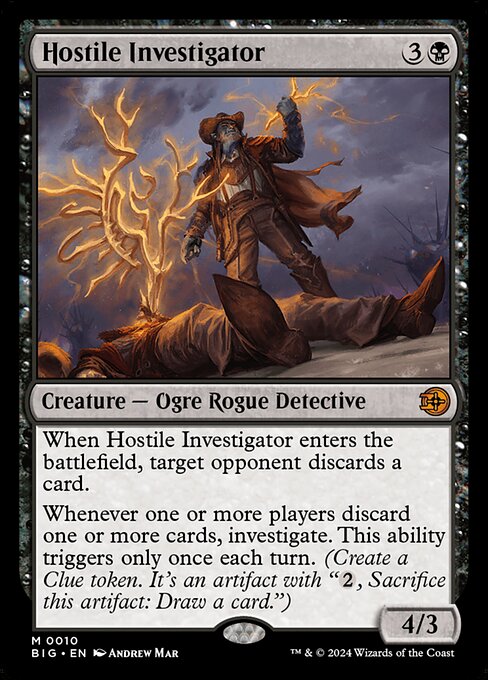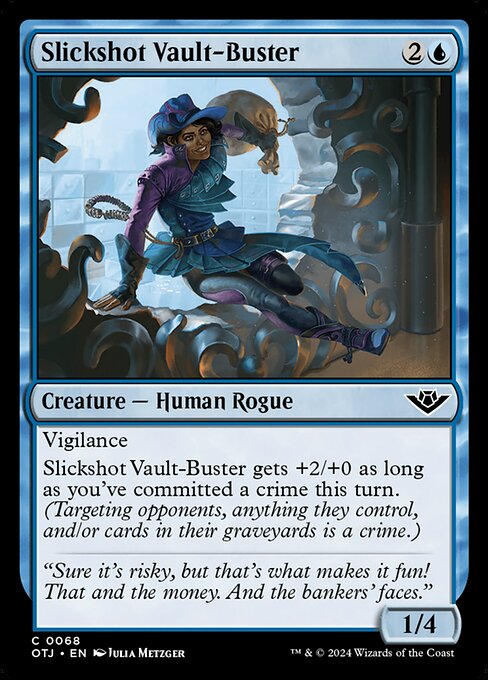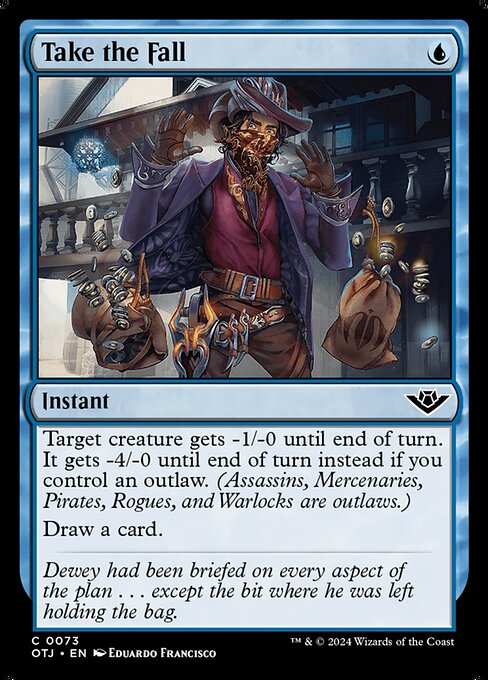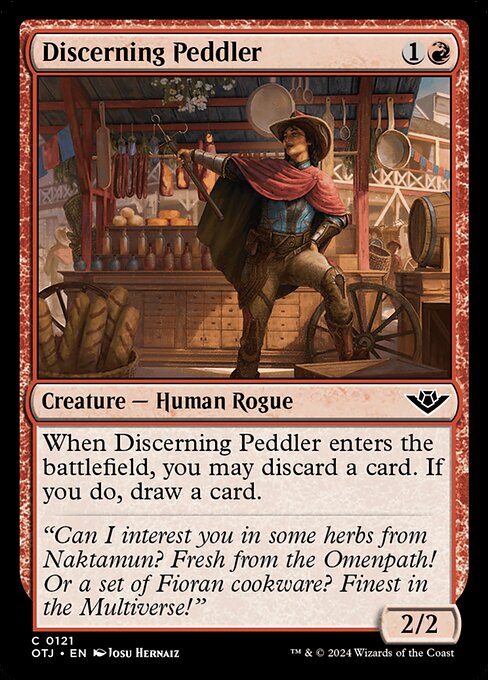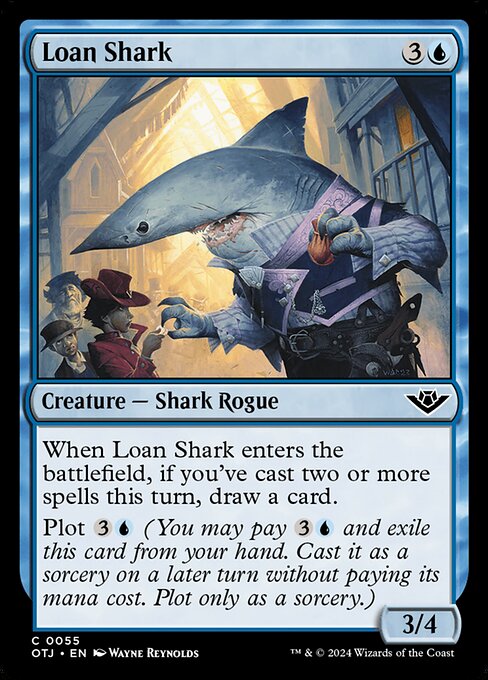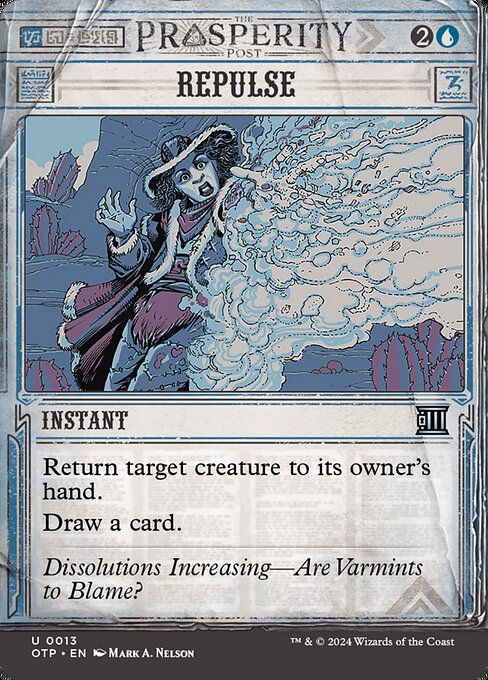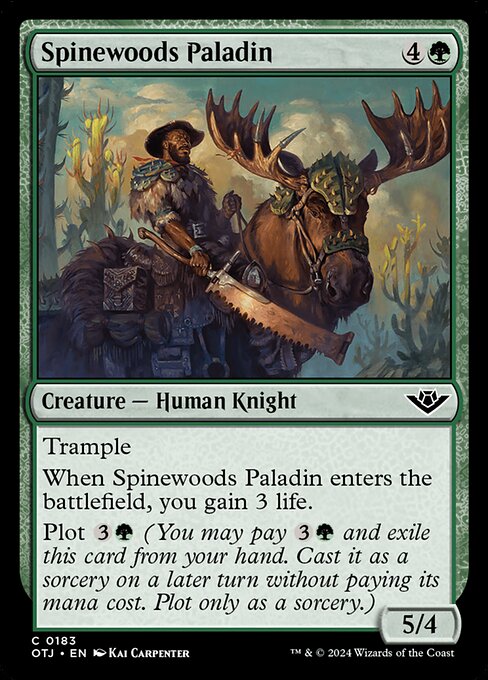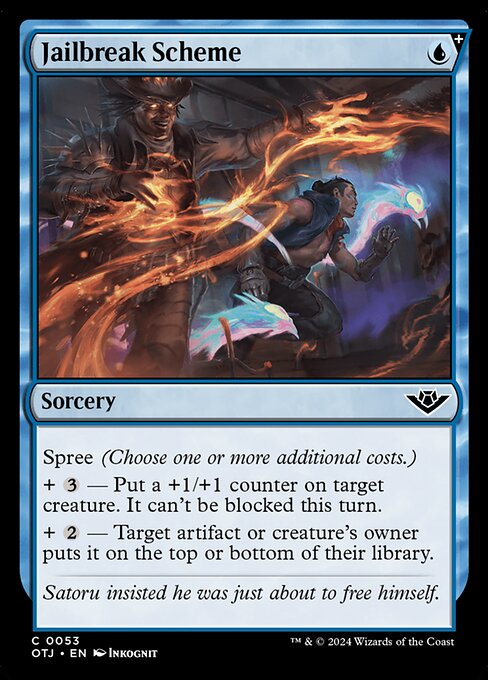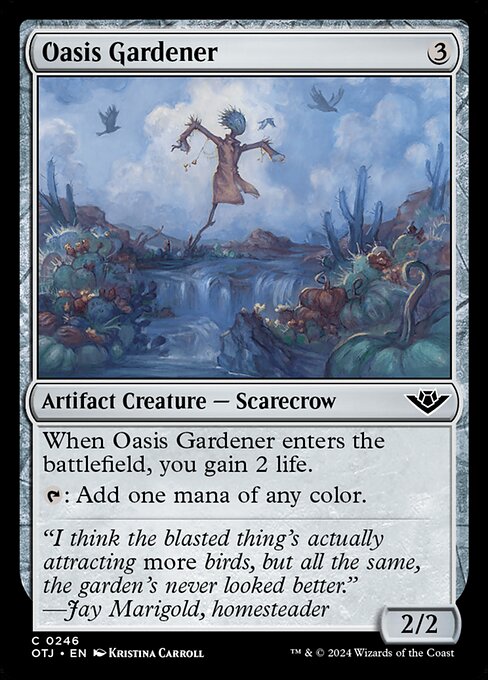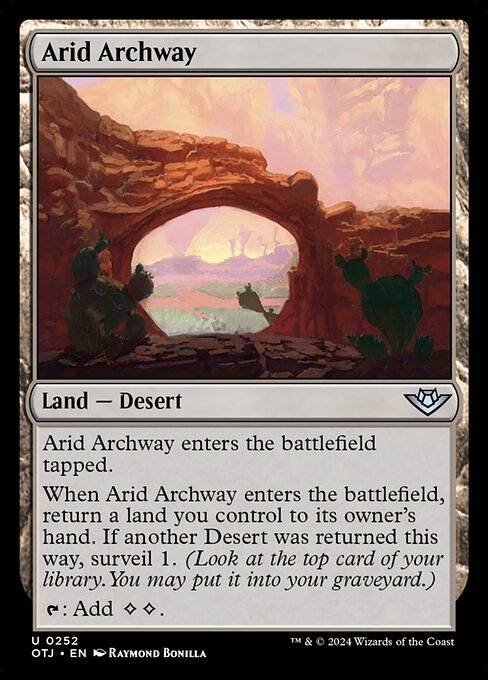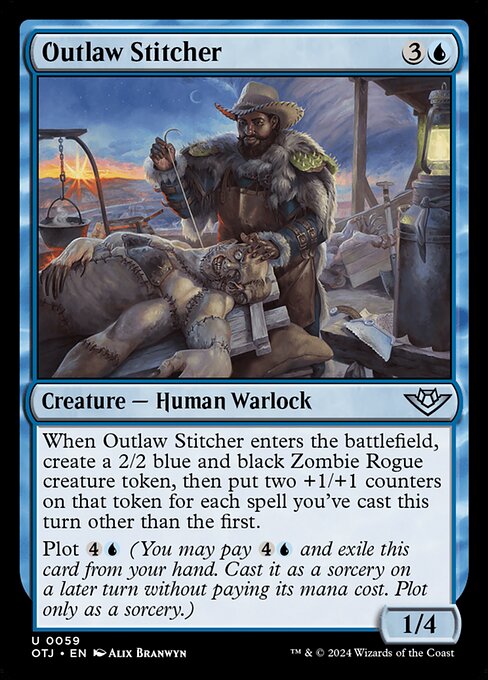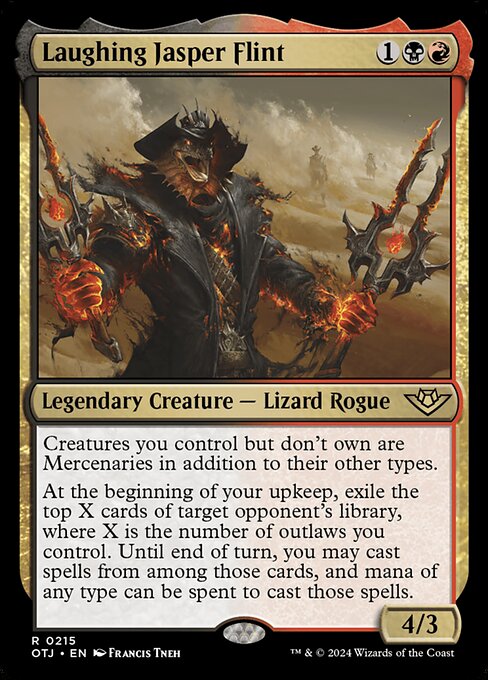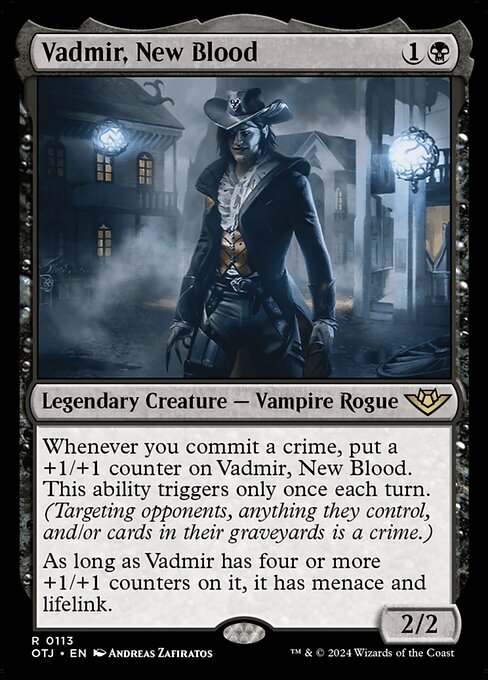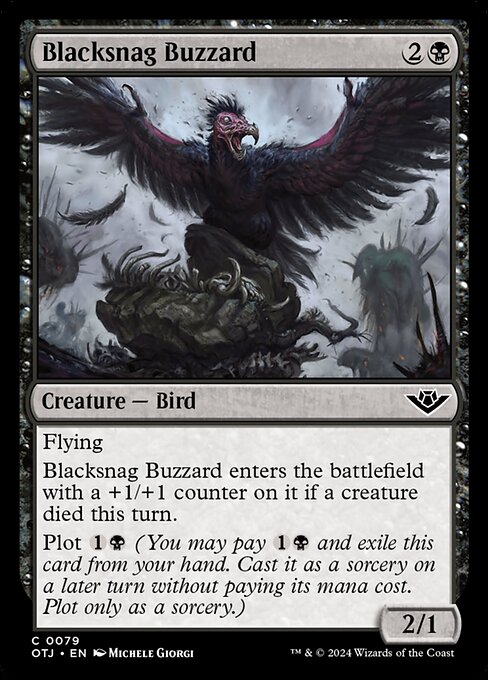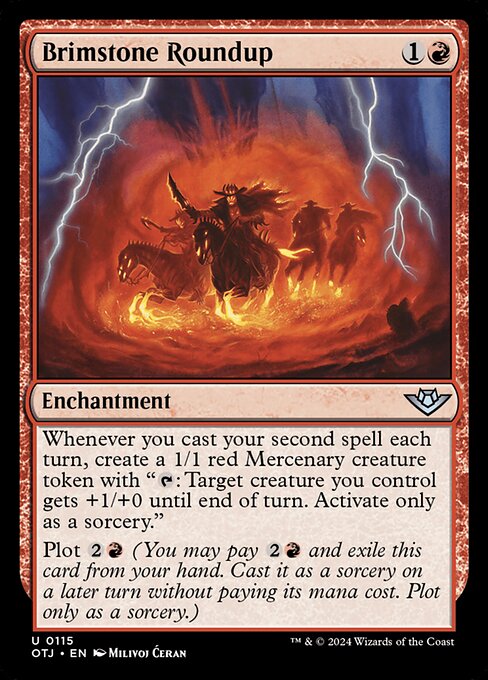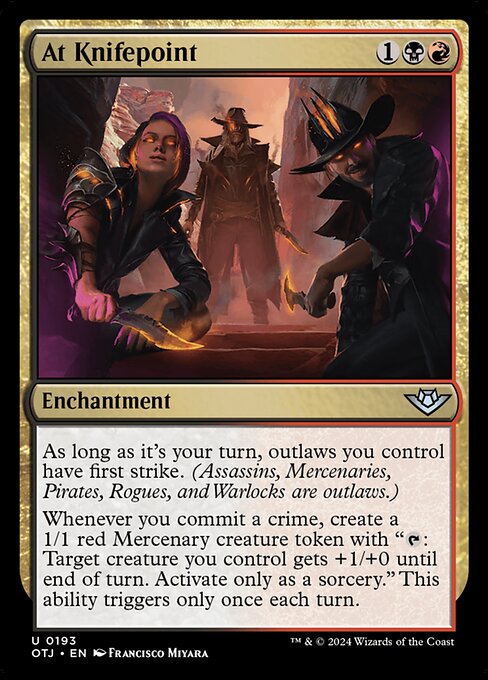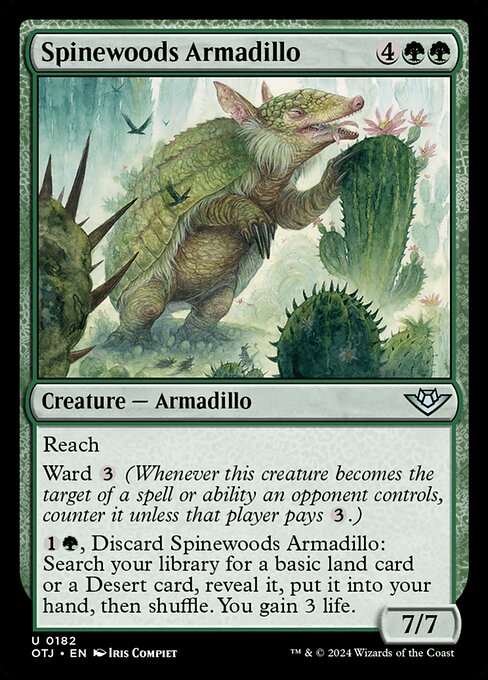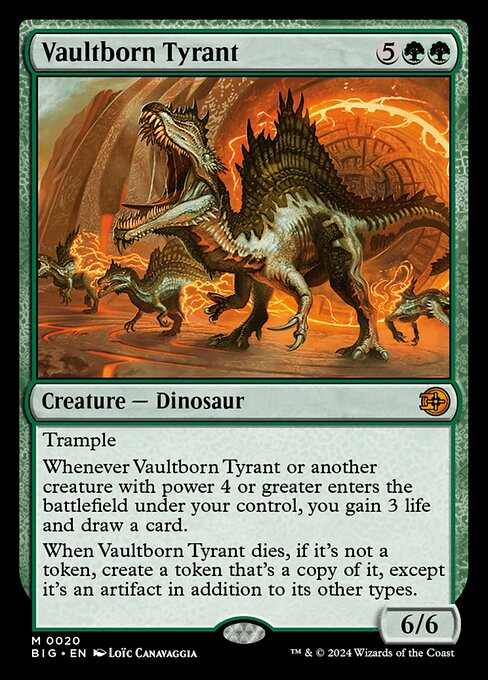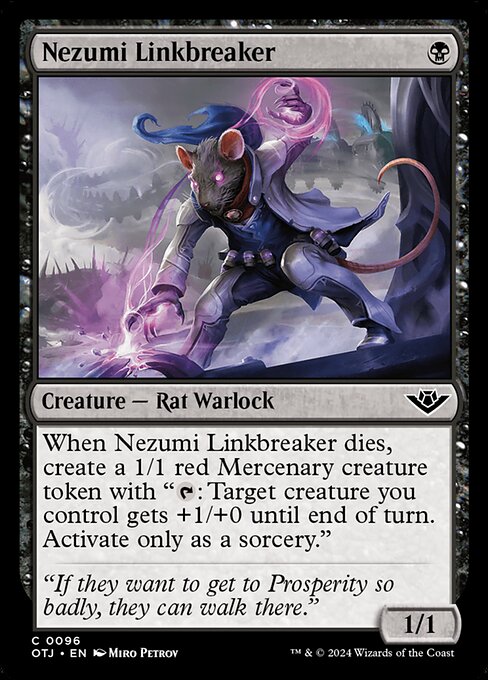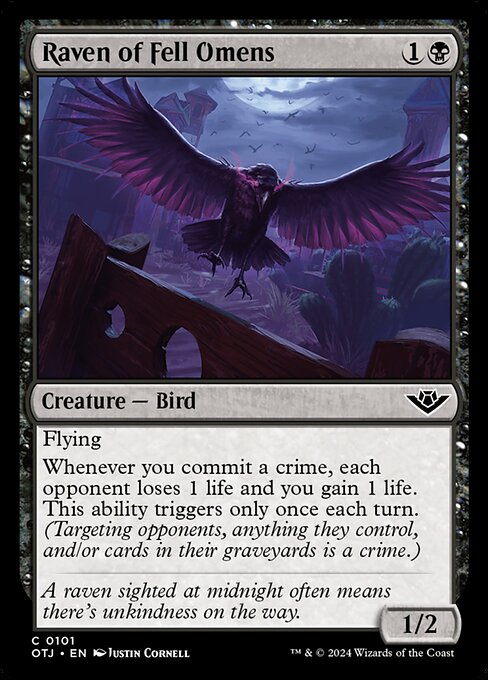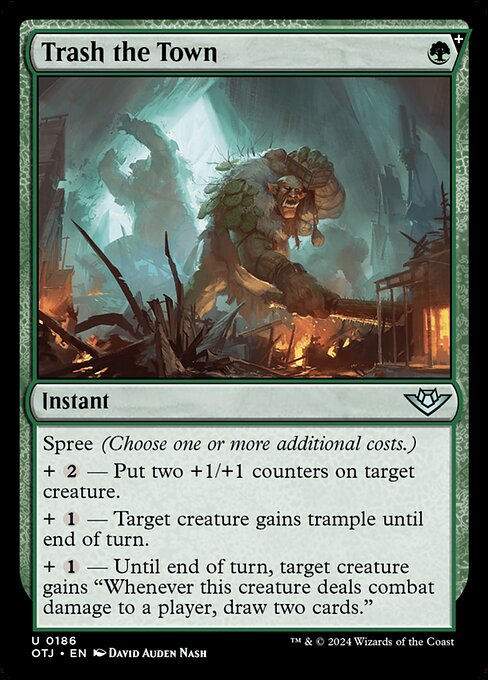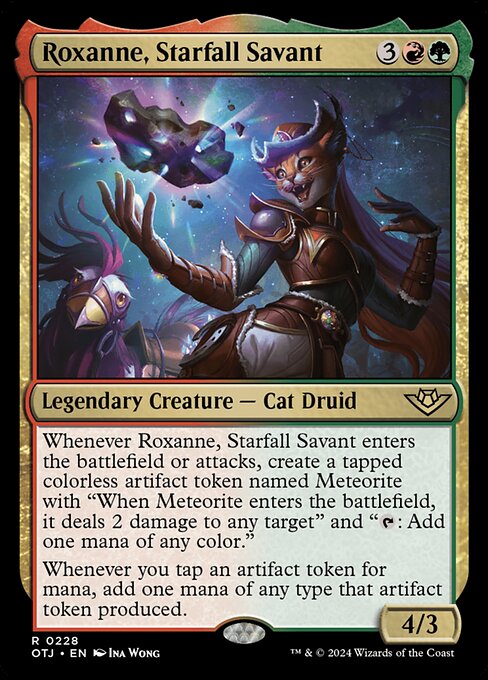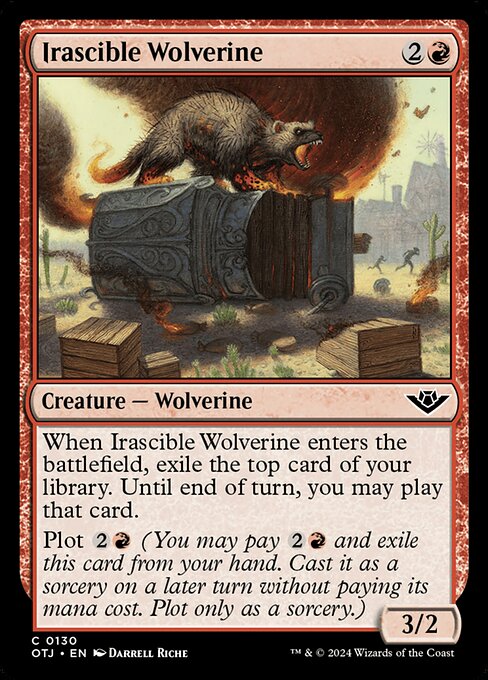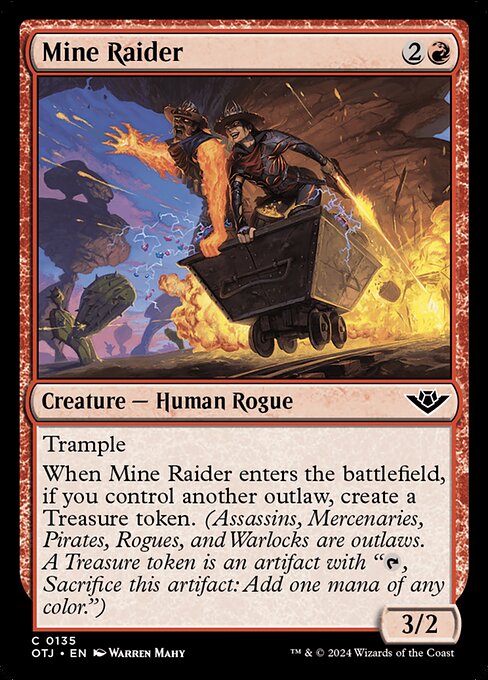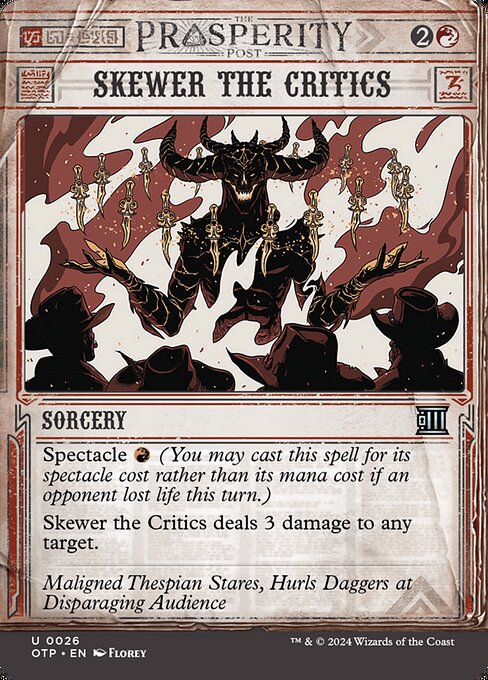Table of Contents
With the new format a week old, we have a pretty large 17Land.com data sample of what is it all about. So I am going to look into the general data to let you know what is and isn’t successful as a strategy so far, and later in the article try to overview all the 2-color pairs and look at some key cards for those archetypes, some niche cards people should probably play more and some traps that people would be well advised to leave out of their decks. But before getting down to fine detail, let’s look at the broad strokes of how the metagame looks like so far.
Color Power Ranking
First thing I get asked by my LGS friends when we get to play a new set is: “What color is busted?”. And this is a perfectly valid question if you want to have a basic overview of the format. By knowing it you know which color is the deepest, which color might be more popular with other drafters, which strategies might be more supported etc. In order to calculate it, I look at 2 metrics. Firstly I compare the popularity of each color in decks logged in 17Lands.com. I count all the games that were played with decks that have a given color and count it as a fraction of all the games. In a perfectly balanced two-color set, the average for each color should be 40%.

But it clearly isn’t. Green is by far the most popular color in the set, ~58% of all decks have it as one of the main colors. Black and White are distant second, being played ~43% of the time as main colors. Red is behind with 38% and blue is last at 34%. Keep in mind that this is the data of 17Lands.com users – it doesn’t mean that the general population of Arena is drafting green at such a high rate. In fact, they probably don’t, meaning that 17L users can opportunistically get green cards later than they should be going in the draft portion. But popularity doesn’t always mean a color is powerful. Is Green that much better than every other color? Let’s look at the win rate of every color.

Green comes on top of the win rate rankings with 56.6%. The 17L average win rate for this set is 55% – so green does overperform. Especially given that almost 60% of the games in the whole dataset contain green, this means the non-green decks have a win rate of only 52.8%, nearly 4%p below the green decks. Not bad, especially given the word is out about green being the top color and its popularity among the 17L users. White is close second with 56%, this means the win rate difference between white and green is not statistically significant. In laymen turns, we can’t convincingly say one wins more than the other. We can convincingly state that white is played much less than green by the 17L users. And this might mean that if drafted more aggressively, white’s win rate could drop to lower values. I can’t imagine white having as high of a win rate if it was drafted at the level green is.
Black comes in 3rd at 54.5%. This is still solid and there are definitely good black decks in the format. It does mean it is likely less powerful than green is. Red at 53% is already significantly weaker than green, especially when you take into account that the bulk of its wins comes from RG decks. Red decks without green in them have only 52% win rate. Blue is last at ~52% win rate. This is still far from the unplayable territory, but you should be aware of this issue.
Keep in mind, we are still in the early format. Not all the tech have been figured out yet. Green seems to be a relatively straightforward strategy, but some of the Grixis color decks look more complex, meaning that within the data you will have a larger fraction of people drafting bad decks and this will lower the win rate. So don’t get discouraged from trying those, just make sure you do your homework and try to figure out which cards you should be putting more weight on, and which ones look like a trap.
How many colors should you play?
Another classic question about a new format is: Is it a 2-color / 3-color format? Some sets are more conducive to splashing or even playing multicolor decks, some just don’t have the mana fixing to support the extra inconsistencies related to playing multicolor. Normally the 17L users are good in figuring out if format is permissive to playing more than 2 colors, so the frequency of play of those decks is a good indicator. Typically a 2-color format has >80% of decks that have 2 colors and 2 colors with a splash, the most 2-color of those formats have a large advantage of pure 2-color decks.

OTJ falls somewhere in between the categories. It does have (barely) 80% of 2 color decks, but splashing is quite prevalent. Around 40% of decks are 2 color or 2 color with a splash, with ~17% of decks being 3 color. This means splashing is easy and tempting enough for the players to give it a try.
But popularity doesn’t always mean the strategy is good. Adding colors to your deck is impacting your power, hopefully in a positive way. But at the same time you lose deck consistency, by sometimes not being able to cast spells you have in your hand. In the most 2-color format even adding a small splash has a penalty on the average win rate. In multicolor-friendly formats 3 color decks, even more, win pretty much the same fraction of their games as the 2 color ones.

In OTJ there seems to be very little penalty for splashing, but we do see a small win rate drop off if we play 3 colored decks, and that drop off becomes larger and larger as you add more colors. This suggests to me that you should try to draft two color decks, but a well positioned splash, if supported by sufficient fixing, is not going to harm your chances. But you’d rather be careful of going all in on 5-color strategies, these seem to be harder to pull off, at least in the early days when the aggro decks are relatively open.
Color pair win rates
This is what you came here for, didn’t you? It is always good to know which color combinations are the best early in the format, but keep in mind, this data is based on the early days of drafting. This means that the decks were still not honed, the sleeper cards not included and tables were most likely more opened than they should be. The key skill in transitioning to mid to late stages of the format is knowing something not many know, not having the same knowledge as everyone. Still, I can tell you from experience that best archetypes do work – still – but the tables are starting to dry out.
So, what are the most popular color pairs as per 17L users?

Selesnya is by far the most popular color combination. 23% of all decks drafted by the 17L users are green – white. That is a lot, remember, in a perfectly balanced format you would expect 10%. That number indicates that invested players trust in GW’s power in the format (spoiler – that trust is not misplaced). Golgari is a distant second at 15.6%, but that is still head and shoulders above the rest. Rakdos and Gruul are at around 10%, but every other color pair is way below, with Dimir and Izzet at ~8%, Simic at 7% and the rest around 6%.
Normally 17L users are really good at knowing what is winning the most and applying that knowledge in draft. The color pairs they draft the most are usually also the ones that win the most. How did they do in OTJ? I kept the popularity order on the next graph to give you a better impression.

I would call it a mixed record this time. Yes, Selesnya is the highest win rate color. 59% Golgari is the second best at 57.2% and is also the second most popular. But next few color pairs are largely misses. Rakdos is the third most popular wit~53% – a whole 2%p below the average of the format. Gruul is fine at 55.7%, But Dimir is at the level of Rakdos and Izzet, the 6th most drafted archetype is dead last in terms of win rate at 50%. Now, it was pretty popular in the first days and that is responsible for that high position and it has been dropping in popularity ever since, but still this is atypical of 17L users to be that high on a low win rate color pair.
The interesting part is in positions 7-9. Simic, Boros and Orzhov all have solid win rates in the range of 54% to 56%, but are drafted very little. Particularly Orzhov is second from last while being 3rd best archetype – if you want to look for some powerful but undervalued strategies, this is the place I would look in. Azorius is dead last in popularity and also second from last in terms of win rate.
I said that it is good to know about the early color pair win rates. But what I didn’t say is the warning. Fetishizing win rates is not a good strategy. You will see that the best players in the world watch data carefully but don’t let the data dictate them what to do, they use it as a valuable source of information. And so should you – but you should supplement that information with additional context. Selesnya is winning a lot – but what is driving this win rate? Murder has a solid win rate, very much not like in the last few sets it was printed – why would that be so. Asking yourself those questions and finding answers – that is what data is useful for, not a raw number of what % of games does card X win.
That’s why in the next portion I will try to look at all the color pairs and try to give a bit more context to what the data says.
Azorius
Starting off with a problem color pair. Blue looks like the weakest color and a support color. That seems to be the problem. It is quite symptomatic that the top win rate common in WU is a blue-black desert, signalling that when we think of Azorius, we should really look for some sort of Esper controlling build. Here are some top Azorius commons according to the data:
One surprise on this list is Take up the Shield, a card that is more connected with aggro decks, not controlling ones. But it is a powerful protection spell and slower, grindy controlling decks can fall behind on life, sometimes that extra life cushion you get can be essential. This is also what Holy Cow brings to the table. The body is not impressive in this format, and the card is generally an underperformer, but in this color pair it does fine. The extra life cushion and some card selection goes a long way.
I was low on Phantom Interference before the format started. I though Plot mechanic will be more prevalent, and it will make countering anything really hard. I am partially right, if you have some plot cards, you can use them to play around Interference efficiently and imagine how annoyed your opponent is. But you don’t always have plot cards to do so. And those are the moments Interference can be excellent. My guess is – the lower the rank you play in, the more powerful the card will become.
Lastly, Mystical Tether is a good catch-all removal. If you want to play attrition / control WU deck, you need a lot of those to deal with many bombs of this format. Keep in mind – those are top commons of the pair, their win rates don’t impress, being around 56%. There are some better uncommon cards:
Not that much better – mind. They all have 56-57% win rate. But they show the general theme: quality removal and creatures that can catch you up on life. All the spells are great, Lassoed in particular is a very efficient removal spell. And the Prairie Dog, if not dealt with early, will make killing you much harder. Especially if you have tons of instant speed interaction – this will allow you to grow it into something opponents want to kill.
There are some cards that don’t do well in this archetype, even though they look like they should.
Djinn of Foot’s Fall looks like a card made for this deck – you can take off a turn to get your “didn’t cast a spell on a turn” payoff. But it does pretty poorly, with a 49.7% Game in Hand Win Rate. This is because the theme of the WU in the set looks like a miss. And nothing exemplifies it more that the presence of both the signpost uncommons on this list of traps. Jem and Wrangler have an unimpressive 53% win rate for cards you need to pick early – this is unacceptable. But importantly, it points you to the conclusion – to be successful in WU I need to ignore what the design team tells me to do.
Steer Clear looks like a kind of removal you might want in WU control. But the numbers are pretty medium for it. It looks like you would have to have way more Mounts – card is just not good enough as a 2 damage spell.
So what are the good reasons to try WU?
The real reason to be Azorius specifically is Fractured Identity. Despite WU being poor, this card has a solid 62% GiH WR. If you see it in your first pack, that is a good reason to start thinking along the lines of WU / WUB control deck. Other three cards are also solid at ~60% win rate, but those can be played in any deck realistically. Three Steps Aheadplays pretty well in WU compared to other archetypes and that makes me think if one of the reasons for this color pair underperforming is not the lack of good counterspells at lower rarity in OTJ.
Orzhov
The “secret” archetype of the format. Posting very good win rates, and yet still very much underdrafted. What makes WB tick?
I can see two types of cards doing well in WB at common: cheap 2-for-1s like Vault Plunderer and Mourner's Surprise, and value cards like Consuming Ashes – an essential removal spell that will deal with most of the bombs or Stage Coach Security – a massive roadblock that will allow you to keep your wagon fort and not have to use the precious removal on lesser threats. The 5 toughness is a very powerful property here. All those cards have ~59% win rate in WB – that is the level of best rares in WU… As for uncommons:
We have a collection of 2-for-1s or better and their win rates are all 61-63%. It is the value WB decks can generate over and over and over while being able to deal with opponent’s threats that makes the color pair good. Play Lassoed, exile their best thing, play Lawbringer, sacrifice the Mercenary from Lassoed, kill their 2nd best thing, trade Lawbringer with their third best thing, cast Shepherd, bring Lawbringer to your hand – sequences like that leave your opponents completely stripped of resources, but if they still have something, just trade the Shepherd, bring it back with Mourner’s surprise, and start the chain all over again. Those are they types of sequences you want to be doing with WB. What are the bombs?
That’s the best part of it – the color pair seems to be mainly reliant on commons and uncommons. Yes, the 4 cards shown above are all very good and have solid win rates of 62-64%, but it doesn’t seem you absolutely need them to be winning. And their win rates are not that different than the ones of the top uncommons. So, what are the traps?
Steer Clear and Arynx package is not what you are looking for in WB. Steer is particularly bad in this archetype. And Arynx – you need to sacrifice a relatively early pick to get something that is completely not on plan for you. Never a good idea.
But maybe more surprising, the grindy plan of making tokens, sacrificing them and generating value through that also seems not to be working. Rakish Crew and Baron have middling win rates and both do better in a more Mercenary-oriented deck rather than WB, which just doesn’t have access to good mercenary token generation engine to fuel it.
Boros
White and red is traditionally an aggro archetype. So far it has decent but not impressive numbers. How should we think of building it?
This list doesn’t strike me as a classic collection of aggro cards. Looking through the list, WR looks like an aggro-ish deck but the one that doesn’t plan on going all in. You want to have a late game plan, you want to have some resilience. Holy Cow and Prickly Pair are aggressive enough, but they also represent some value. Removal is traditionally not on par with best aggro creatures in the format like here. And the same goes for uncommons.
All those cards are more value oriented than aggression oriented. Boros is just a midrange in OTJ – or at least its most successful versions are.
Bruse Tarl, Roving Rancher is a very good reason to get into WR. 61% win rate, mainly because the whole color pair has a slightly lower win rate. Other cards are at similar level – Dust Animus making the appearance for the 3 time is a good indication, you should take this card when you see it. Hellspur Posse Boss generates a ton of value and especially in a deck that can have Ertha Jo. Stingerback Terror is just very big very soon with double evasion in Flying and Trample – cool thing to have with Mercenaries. So – what are the traps?
Bighorn is a fine card. In GW. Looks like any other homes are not particularly good for it. Lullaby is too much not on the plan. WR is midrange but still and aggressively slanted midrange. And 51% win rate suggests you’d rather not play it in your WR decks.
Ride Down is the reverse of Lullaby – since as a midrange deck you are not guaranteed to be the beatdown, Ride Down is going to be dead in your hand from time to time. 53% win rate is poor for a card with that pedigree. Poor enough to think hard if I want to put it in my deck or not. Scorching Shot is mind-boggling. 2 mana to kill 96% of creatures in the format should be good. But maybe sorcery speed and RR in the cost are problematic. Maybe because its potential of killing larger creatures, people are afraid of using it earlier to kill a 2 drop and that shows in data?
Selesnya
The best deck in the format is the best deck mainly because it is relatively straightforward to build, but that doesn’t mean you can’t learn something new by looking at the data. And maybe the concept of WG is a bit wrong in the end and adjusting it will make you better. Look at the best commons.
Throw is just the best common in the set. But it is particularly good in WG, due to how naturally you will have more mounts. And putting counters on any of the common ones is big game. Upgrading your 4 toughness thing to 5 is massive. I had so many games where a 4/4 Beaver was benign, but a 5/5 carried the game. Arynx with 4 power is really hard to deal with. And sometimes you will just cast it on a normal creature and still be happy about it. You better be happy with a 62% win rate common.
But the interesting part is the next two. Take up the Shield and Snakeskin Veil play a similar role in the deck – they are the insurance to your early aggressive and value creatures. And judging by 60% win rate, they do it well. Removal is an important part of this set and having ways to counter it can be a game-winning proposal. We still need to wait for the data confirming it, but I think playing multiple copies of those spells in your WG deck makes a big difference. Just make sure you have enough creatures to target with those. But they will, thanks to your likely early advantage, double as removal spells.
Last common on the list if Trained Arynx Green creatures are generally good and there is plenty of solid uncommons and busted rares among them. But Arynx is key due to unique role it plays. There are not many 2 mv Mounts, and those are the cards that enable you the dream curve-out: turn 2 Mount, t3 Miriam with Snakeskin Veil up. Arynx is a key component of this combo, but will work in any curve-out. It is basically unblockable in the first few turns, and at the same time the scry will let you to fix your draws into the mid-game. Whenever I draft WG, Arynx is a high priority. And the 60% win rate suggests I am right there.
The top WG uncommons show that perhaps there is more to WG than a dumb WG aggro it is painted as.
Lassoed and Buried in the Garden for a powerful removal package with a whooping 63-4% win rates. Buried also provides potential for splashing, something I happily do in some versions of WG. Adding some black cards to give the deck a grind capacity well into the late game works surprisingly well. In fact, just outside of top 4 uncommons in WG we find the Ruthless Lawbringer, a WB card. And Rutstein, Badlands Revival and Back for Moreare also quite high on WG win rate table.
Shepherd does something similar to those BG cards, you just don’t need to splash for it. And if the ground is gummed up, can go over the top of your opponent, while still being able to block. In many games it will be a game over card, when from a small board, you all of a sudden get 8 power on board for a humble 5 mana.
Outcaster Greenblade enables splashes, enables you hitting your 4 drops on curve and can become a potent beater if you prioritised Deserts. As you should.
Most importantly, neither of those cards scream “aggro”. They are mid-range value cards and removal. And these are the most successful WG cards so far. You will have to godown to 8th place to find Miriam, Herd Whisperer and there are no steeds in top 10. Maybe there is more to WG decks than just aggro in the end? There are definitely bombs involved.
All those cards above have over 67% win rate. But they are not al the rares or mythics in WG that have the win rate over 67%. The abundance of broken cards in this color pair is otherworldly. But apart from the Steed, they all can find other homes quite easily. To put it in the right frame of reference. Dust Animus has a higher win rate in WG than in any other W color combination. So far it made the top 4 rares list every time. In WG it doesn’t even break into the top 10.
OK, we get the great stuff. But what shouldn’t we put into the WG decks? What are the traps?
Hardbristle Bandit is still the highest drafted common on Arena. A distinction not merited by any achievements. It does relatively well in BG decks, especially when they splash, but in WG decks it is a detriment. Drawing it in a game results in a lower win rate, even if you splash, by 1-2%p but in pure WG decks, drawing the Bandit is a whole 5%p drop in the win rate. Avoid at all costs – it is too high a pick to waste it. It you want to ramp – Intrepid Stablemaster does it sooo much better.
At uncommon two 2-drops look pretty bad. Both are just not on the plan for what the deck wants to do. You don’t commit that much crime, and you don’t want to play behind the curve so you can accrue some tiny value from the Entertainer.
Dimir
Out of top 10 commons in Dimir, 6 are Deserts. This tells you something about the deck itself. I am not focusing on those because I don’t think it is particularly important for you to know that Eroded Canyon is better than Lush Oasis. But note that Conduit Pylons are the 2nd best common in Dimir and that the deck definitely wants to splash and not only commit free crimes. Of the spells:
Desert's Due looks quite natural in a deck that wants as many Deserts as it can get. With 2 Deserts on board this becomes a premium removal very quickly, and win rate reflects it. Second best spell is also a removal, showing just how essential killing bombs is in this format.
Desperate Bloodseeker is a perfect 2-drop for this deck. Cushions your life total, can fuel your graveyard synergies and late in the game – can commit a crime too.
Mourner's Surprise is an excellent way to ensure you won’t run out of things to do and the little body = some lifegain when needed, either by blocking something big, or by boosting one of your lifelink creatures, which is important more often than you think.
At uncommon the 4 best cards are split evenly between 2 mana efficient removal and 5 mana flying value finishers. It is of note that this is the color pair, where Plan the Heist, a 4 mana draw 3 spell is particularly good. Not great but this is its home. All this tells you, you want to play a control game and strip opponent of their resources and finish it with a threat that continues to give you value.
What to splash in your Dimir deck? Bonnie Pall is the answer. It works perfect here. Heavy blue cost is not a problem and getting green mana is trivial. All the top bombs have a win rate well into the 60% (62-66%). The most interesting and unique one is Nathan Steuer’s card – the Duelist. Because of the heavy focus on crime, in this deck specifically it will make a great impression of Ledger Shredder, but the constructed version. Card selection, fueling the graveyard synergies, evasive attacking and keeping smaller attackers at bay – everything you want.
And what are the things you don’t want?
The cards I selected are just too small-ball. This deck would rather control the board and win with something big that nickel-and-dime opponents with a 3/4 vigilant creature if you commit a crime or hire a 2/3 drake to do the job. Forsaken Miner is a no-no because your creatures have to be able to block. You are not offensive enough to play it.
Unscrupulous Contractor is a bit of a surprise, but you will not often have small things to sacrifice and 2 life is a lot to give away in a format with pinging deserts. Cushioning life seems important in UB, as many games will end with you being at below 5 life. You don’t want to increase the odds of ending at below 1.
Izzet
The problem archetype. The design team finally managed to create a decent “creatures with power 4 or greater” archetype. But casting 2 spells a turn one is still proving elusive to them. Doing so requires umping through many hoops – having spells, having mana, having the board align well with spells you have in hand – you don’t want to cast cards just for the sake of casting them in the end. And that is a hard ask. And possibly the reason Izzet has the lowest win rate.
So what cards do work in it?
Those are the best commons. But their win rate is just so unimpressive. 53%. That is a signal to me I should avoid UR for the time being. Unless I find a build that goes against the grain I find interesting. Those card align with what the archetype is supposed to be doing – which means it is designed ok, just the power level is not high enough. And it is not much better with uncommons.
We know Repulse is a great card. It having only 55% win rate means there is something wrong with the rest. Slick Sequence is on theme and is one of the more powerful uncommons in the color pair, meaning it is supposed to do what design team planned, it just doesn’t do it well enough.
The top 3 of those have interesting win rates. But they are good in any color pair they can be played in so there is no great reason to specifically go Izzet for them.
I will even skip the trap part by concluding – Izzet as a whole is a trap. And don’t get me wrong, you can get a decent Izzet deck, but you need plenty of luck as there is just not enough power in that color at common.
Simic
Enjoying a spell of not being the worst Simic has plenty to offer in OTJ after being one of the better archetypes in MKM. At common:
At 57-58% win rate those commons are better in Simic that most of the Izzet bombs, which is a good signal for UG mages. Throw is just generically good. Spinewood Paladin is a large beater that cushions your life, but the interesting card here is Jailbreak Scheme. Locking your opponent in endless recasting of their things is a great plan to get into the late game and this seems to be what Simic really wants. Undoubtedly fuelled by the fact that the set’s most obnoxious bomb is in Simic. And you can wheel this card reliably, which is a great bonus. And Bonny Pall will appear once in every 3 draft pods. All those cards let you survive long enough to draw into it.
And if you don’t have Bonny – just outside of the top 4 you have a good common version of it in Dance of the Tumbleweeds. The Beanstalk Giantat home does pretty well at ~57% win rate.
If your good uncommon bench is a bit short – why not borrow them from other colors? a WG and BG card in top suggests splashing is easy and successful in UG. Outcaster Greenblade is certainly helping with that and making sure you get enough lands for your mana-hungry deck. And Marauding Sphinx, thanks to its 5 toughness, vigilance and ward, yet again proves to be the lower rarity finisher of choice for slower decks.
I wonder what the top bomb for Simic will be…
What else did you expect? 67% win rate in a non-top archetype is amazing. This is the reason to be UG in a draft – you open Bonny, you position yourself to be in UG, because it is the best home for it (but now you also know Dimir is an option. Bonny is exceptional but the other cards are not that far behind at around 62% win rate. All of them are easy 1st picks in most packs and fit well with UG plan of delaying the opponent in wait for big creatures.
You might notice one card from the bonus sheet missing from the list that should probably be there. Yes, the OG Oko – unfortunately there is still not enough data to get its win rate. Against me it is 50% so far – and I consider it a great success. I am sure as more games trickle in Oko v. 1.0 will join the top 4.
What are UG traps?
Geyser Drake strikes again – turns out even power-creeping wind drake is not enough. In its defence, this probably has something to do with the set. One thing here is, on top of everything there is plenty of impactful reach creatures which means the plan of attacking opponents in the air is less appealing, especially in decks that plan to board-stall.
Oasis Gardener looks like a card that would be good in Simic, but has poor results so far. 3 mana for a mana dork that dies to a sneeze is just not good enough here. Maybe with other statline, say 1/4, it would be playable.
Another card that generally underperforms is Arid Archway – UG wants to ramp and yet this card has low win rate. I am not sure how much of it is due to bad deck construction, reality is, results are not enthusiastic. Same with Outlaw Stitcher. Card is picked very highly but has middling win rate in all color combination, being particularly bad in UG.
Rakdos
Rakdos win rate is not impressive, but is at a similar level as Dimir. And from the data perspective Dimir looks fine, low color pair win rate is likely linked to lot of badly built decks. In Rakdos, though, it doesn’t look as optimistic as in Dimir. Starting with the commons:
Another mixture of removal and 2-for-1s. But this time with much weaker numbers. Dimir’s best commons were at 58-59%, Rakdos’ are at 54-5% and that is a big difference between colors that have a similar altogether win rate. Looking at this data tells me that, unlike in Dimir, where there is potential for growth, people figured out Rakdos and what you see in win rates is what you get. And it is not that much better at uncommon:
Bandit's Haulas a top uncommon is mildly surprising and may show the direction. Not aggro but grindy attrition. I will note a small sample size there though. Other cards – all removal, albeit one of them on a reasonably sized stick. Nothing special here apart from – maybe focus more on removal and less on aggro plan. Still win rates of 57-58% are not exactly stellar.
There is some hope for Rakdos in the rare department. Hellspur and Rakdos themselves look mighty ppowerful, as does Jasper who takes over games if allowed to live. One problem is that unlike in Selesnya, Rakdos doesn’t have great ways to let them live. But those cards and to lesser extent Vadmir, are good reasons to end up in Rakdos. I would be skeptical of drafting it otherwise.
Two commons I selected mainly because they are played a lot given their bad win rate. Both clock at sub-50%, Muscle reaches as low as 47%. They suffer from the character of the format. Muscle is a 5 mana bozo that will have to stand against such bombs and has only 4 toughness which makes it trade badly on blocks, it would have probably been much better as a 5/5. Buzzard suffers from the not-flying friendly format and requires some hoops to jump through to make it half-decent – which is not really good in opening hand, but especially bad when drawn late.
Two Mercenary producing enchantments have horrid stats. Knifepoint is already bad at 51% but Roundup is abysmal at 43% GiH WR. Probably ignoring those cards completely is a good way of improving your Rakdos game in the format. You’d be better off playing Ferocification. Really. Not that I endorse playing Ferocification or anything.
Golgari
Down to penultimate but not penulti-least. Golgari is the second best and second most played archetype. Let’s look at the commons.
Here again half of the top 10 cards are Deserts. Rest is removal – hope by now you get the message that removal is important in OTJ? Another card that does very well is Spinewoods Paladin – it stabilises, turns corner and is a very good target for any graveyard recursion. All those things Golgari loves. Worth mentioning that not far behind we’ve got Patient Naturalist – Golgari is the most natural home for it as self-mill will be valuable here. I always mill my recursion, but maybe you are more lucky with it 🙂 All those cards are at 60-61% win rate – so clearly they are excellent.
Top 3 uncommons say it all here. It’s all about graveyard, filling it, emptying it and using mill as delayed card draw. And yes, Shepherd is a white card. White is a natural ally of Golgari in this set, with plenty other white uncommons on the list of best cards (Buried in the Garden, Lassoed by the Law, Ruthless Lawbringer – all over 60% win rate). But the top cards are a notch better in the region of 63-64%.
The average mana value of the top 4 rares in the set for Golgari is 6.5 mana. Average win rate for them is 67.5% – that is a lot. Don’t be afraid of playing expensive but powerful cards here. With early removal and attrition, you will get there eventually. The format is not unforgiving fast if you prioritise removal correctly, which is highly. And once you land one of those, you should be able to close the game easily. And if not – why not recurring them? Second time should do it!
If expensive bombs are the lifeline of the color pair, small value little creatures are not. And all the cards on this list ooze that small incremental value energy. And looking at their win rates, they fail it. Your creatures need to trade to be useful. That is why Vault Plunderer is good, while Nezumi Linkbreaker is not. You need a 2-drop? Get some Desperate Bloodseekers and fill that GY with bombs to recover later.
Gruul
Time for some smashing and Gruul does it relatively well.
Gruul is not about commons. The list here are solid. Throw has 59% win rate, rest is around 56%, but that is not incredible. Since the archetype has solid win rate, it means you need to find power elsewhere. Tumbleweed Rising is an interesting one – if you play it you want to make it a part of your double-spell turn 5 – a 3 mana 4/2 + this is a backbreaking sequence. And one to keep in mind judging by the win rate. Card can be awful in the late game, though, so don’t overfill on it.
Uncommons are where the power of Gruul is. Of note – Trash the town does very well in Gruul, as sometimes just giving trample will be enough to create lethal damage given the sizing of your creatures, so a mode useless elsewhere becomes playable, which always improves card’s power. Badlands Revivalis great in Gruul as it provides it with what it lacks the most – resilience in late game where other decks will win if they deal with your board. There is a ton of other good uncommons in Gruul – including both of the signposts. Those going bit later should be your signal to move into the color pair. Of not – no small creatures are particularly interesting, apart from Aloe Alchemist – which can be an early drop but mainly is a good pre-combat trick.
Since Gruul has green in it, you can expect a collection of broken bombs. This one has a new addition in Roxanne – amazing card, which does everything Gruul wants to be doing. Stopping aggro, ramping fixing and generating value. All of those cards are above 65% – meaning they are good reason to start drafting green and if red looks open or you get some premium RG cards, Gruul is a good lane in your draft.
All the cards above are played frequently in Grull, but seem to be a little bit too small-ball for it. Mine Rider is too often a vanilla 3/2, Wolverine has to be played in a weird way due to expensive spells in your deck. You can’t afford to play creatures off-curve for the Entertainer and Skewer just doesn’t deal with what you want to deal with – larger creatures. Sorcery speed kill a 3/3 is not what you are interested in. That creature sizing should be eaten for breakfast by your large beasts.
Conclusions
Hopefully you found this text informative. My most interesting take aways are:
- Dimir is better than color pair win rate numbers suggest – just work on building it better.
- Selesnya can be more resilient into the late game. Think of it as an Abzan graveyard recursion deck with some explosive aggro start potential.
- Izzet, Rakdos and Azorius look pretty bad, but Rakdos has some unique bombs to make it playable sometimes.
- Orzhov is powerful – explore more of data on this deck and start drafting it correctly – you might be surprised with the results.
Try to test what you learned here in practice – and if you do – don’t forget to let me know how it went!
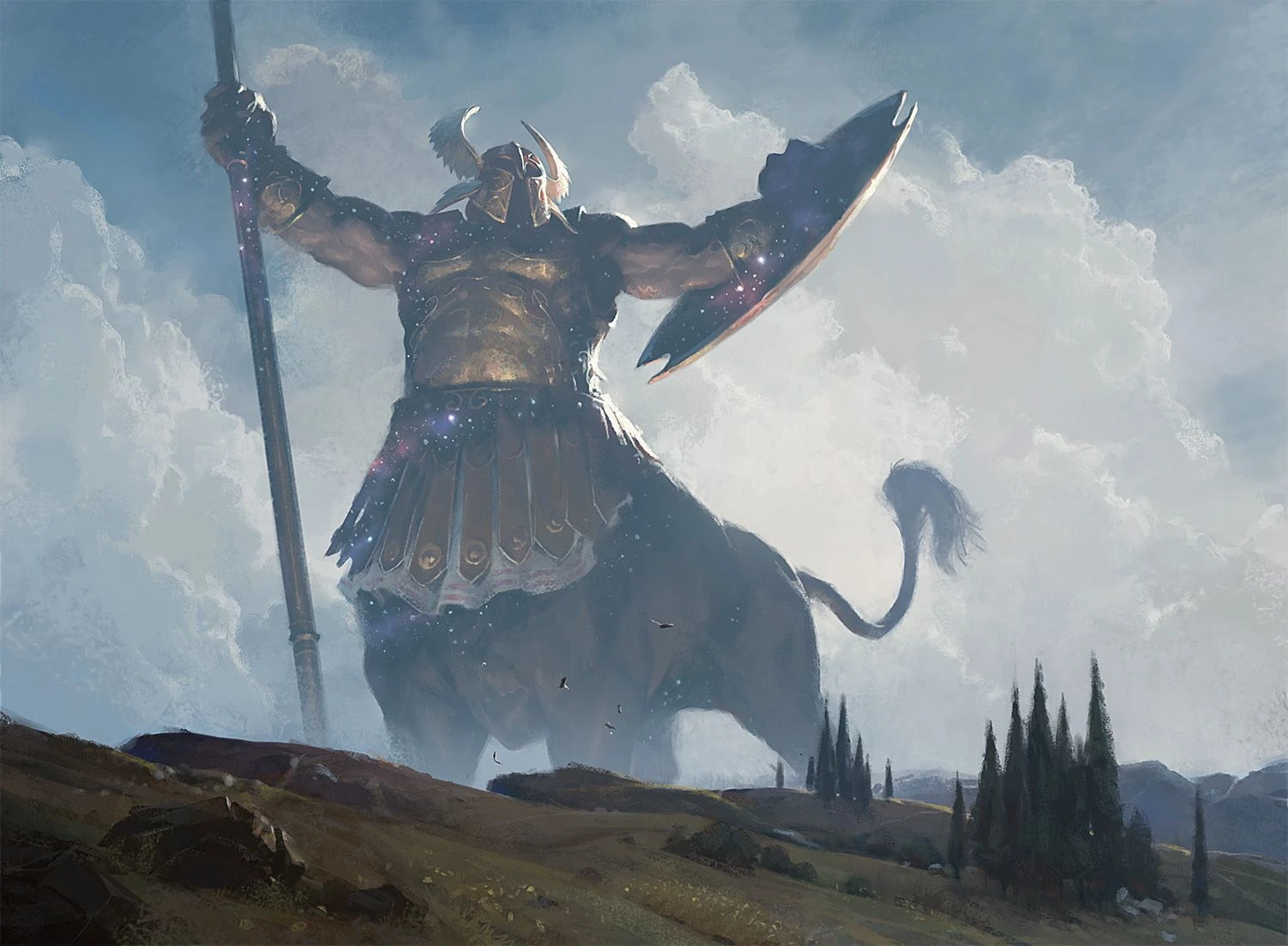
Premium
Enjoy our content? Wish to support our work? Join our Premium community, get access to exclusive content, remove all advertisements, and more!
- No ads: Browse the entire website ad-free, both display and video.
- Exclusive Content: Instant access to all exclusive articles only for Premium members, at your fingertips.
- Support: All your contributions get directly reinvested into the website to increase your viewing experience!
- Discord: Join our Discord server, claim your Premium role and gain access to exclusive channels where you can learn in real time!
- Special offer: For a limited time, use coupon code L95WR9JOWV to get 50% off the Annual plan!































